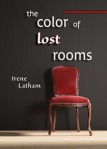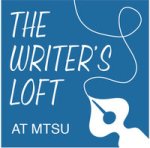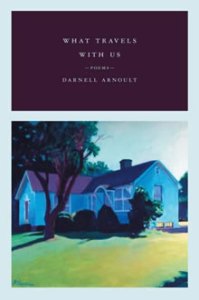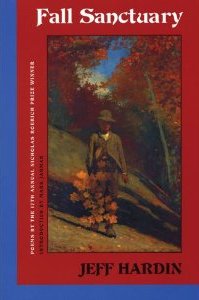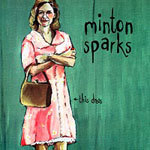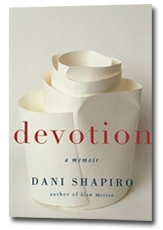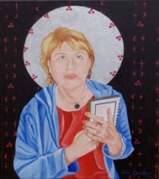For reasons I won’t go into, 2010 has not been my favorite year. But, inspired by the year-end list posted by fellow Tennessee writer Susan Cushman on her Pen and Palette blog, I’ve realized there have been plenty of things I’ve enjoyed, especially in the area of books and music. So here are my personal favorites of 2010, which I share in hopes that you might find something here that will inspire you. Happy reading, happy listening, happy following your muse.
POETRY
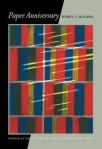
Bobby Rogers, another writer from Tennessee, won the 2009 Agnes Lynch Starrett Poetry Prize with this book.
Favorite new poetry book: We start out with a tie: The Candle I Hold Up to See You by Cathy Smith Bowers and Paper Anniversary by Bobby Rogers.
Favorite new-to-me poetry book: The Door by Margaret Atwood (I especially love one poem in this book, “Owl and Pussycat, Some Years Later.”)
Other must-mentions : Cecilia Woloch (who was just awarded an NEA fellowship); Irene Latham (whose new poetry book The Color of Lost Rooms is out December 21st); The News Inside by Bill Brown; Gary Soto; James Applewhite.
FICTION
Favorite new fiction: Crooked Letter, Crooked Letter by Tom Franklin
Runner up: Major Pettigrew’s Last Stand by Helen Simonson. This is the winter 2010-2011 “One Book” selection for Rutherford County, Tennessee, where I live (and was on this year’s selection committee. We picked it before Oprah did, I must say.)
Favorite new-to-me fiction: Plainsong by Kent Haruf (Yes, I’m embarrassed I have only just now read this.)
Other must-mentions: The Madonnas of Leningrad by Debra Dean (related NPR story); Noah’s Wife by T.K. Thorne; Crossing Brooklyn Ferry by Jennie Fields; The Bible Salesman by Clyde Edgerton

Zeitoun is an essential American story. Fellow writers: It's a masterpiece of "show-don't-tell."
NONFICTION
Favorite new nonfiction: Devotion by Dani Shapiro, which I blogged about earlier this year
Favorite new-to-me nonfiction: Zeitoun by Dave Eggers. An amazing story about a hero in post-Katrina New Orleans…who is arrested as a suspected terrorist. Related story

Bela Fleck, Abigail Washburn and Bryn Davies on the set of Jammin' at Hippie Jack's.
MUSIC
Most of my favorites fall more or less into the category of Americana music, but there are a couple of very enjoyable outliers in the mix, too:
Favorite artist I saw live in 2010: Abigail Washburn, who absolutely captured my heart with her energy, eclecticism and unsurpassed originality. Her new CD, City of Refuge, is out in January 2011.
Runner-up: Straight No Chaser
Other must-mentions: Carpenter & May and Rockin’ Acoustic Circus (love that name!)
Favorite new CD: Genuine Negro Jig by Carolina Chocolate Drops. I love this video of them performing “Hit ‘Em Up Style” on WDVX’s Blue Plate Special in Knoxville.
Favorite new-to-me CD: Learning to Bend by Ben Sollee
Other must-mentions: Darrell Scott, Nora Jane Struthers, Kathy Mattea (who I love for her music and for her work as a spokesperson for LEAF, which is working to stop mountaintop removal in Tennesee), Sam & Ruby, Sarah Jarosz.
PERFORMANCE POETRY VENUE (where we performed, or hope to)
Kelsey and I were blessed to share my words and her music at a lot of venues throughout middle Tennessee in 2010.
Favorite outdoor venue: SpringFest/Diversity Day at Webb School in our second hometown of Bell Buckle, where we had a marvelous sound system.
Favorite audience: Southern Festival of Books
Of course, we also attended a lot of music events where Kelsey jammed or competed, but as she’s the expert in that arena, I’m going to let her mention her favorites on our Facebook page.
Other must-mentions: Author River Jordan‘s radio show on Radio Free Nashville, where I got to talk about and read poetry (mine and other authors’) almost as long as I wanted, and the Franklin Main Street Festival, where we were a guest of Landmark Booksellers and learned that performing poetry on the street generates about as much interest as preaching on a street corner while wearing a sandwich board that says “THE END IS NEAR.”
Favorite venue where we haven’t performed (yet): Poet’s Corner at Scarritt-Bennett in Nashville, where there’s a reading the 4th Thursday of every month.
Well, those are a few of my favorite things for the year. And now – with Julie Andrews’ voice in my head – I realize maybe 2010 wasn’t so bad after all.
